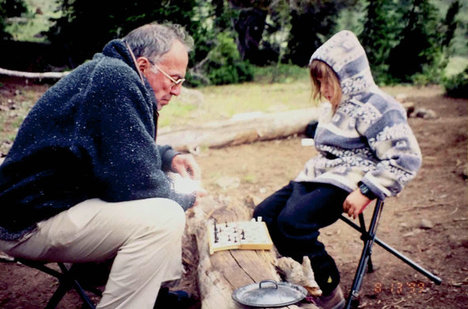(p. D8) Most scientists rely on grants from the federal government and private foundations to finance their work. Michael W. Davidson turned to neckties.
Mr. Davidson, who died on Dec. 24 [2015] at 65, used sophisticated microscopes to create stunning, psychedelic images of crystallized substances like DNA and hormones, and he contributed to Nobel Prize-honored research about the inner workings of cells. His images were on the covers of scientific journals and, as unlikely as it might seem, on neckwear.
They found their way into men’s apparel in the early 1990s, when Mr. Davidson called Irwin Sternberg, the president of the necktie company Stonehenge Ltd., proposing a series of ties using his ultramagnified, wildly colorful images of vitamins. Mr. Sternberg, though skeptical, agreed to take a look.
“When I saw Michael’s work, I started to think I couldn’t get a designer more talented,” Mr. Sternberg said in an interview.
Stonehenge released a line of “vitamin ties” in September 1993. A year later, neckties with Mr. Davidson’s images of moon rocks were released on the 25th anniversary of Apollo 11, the first manned lunar mission. Ties with images of cocktails, beer and wine followed. Millions of ties were sold, and a slice of the profits — millions of dollars — went to charity. Mr. Davidson’s share went to his laboratory work at Florida State University in Tallahassee.
. . .
Mr. Davidson started college at Georgia Southern University, then attended Oglethorpe University in Georgia before earning a chemistry degree at Georgia State.
He arrived at Florida State in the early 1980s as a graduate student. He quit to start a business chrome-plating auto parts.
A few years later, Mr. Davidson returned to Florida State as a microscopy technician for a materials research laboratory. “He just came in and said, ‘I think there are things we can do,’ and he got hired,” said Kirby Kemper, a retired Florida State physics professor who was then associate chairman of the physics department.
To produce his work, Mr. Davidson hired an army of assistants. Some were undergraduates. Others were out of school with no credentials in the field. But the work helped propel many of them to successful jobs in academia and industry.
Eric Clark had been a nurse when Mr. Davidson hired him as an assistant in 1999. Now, as an application developer, he is continuing Mr. Davidson’s educational website and scientific illustration operations. (The molecular biology laboratory was disbanded.)
Mr. Davidson worked seven days a week, and he expected the same of the people who worked with him. On his door was a large metal sign that said, “Hey you, get busy.” MagLab officials told him to take it down. Mr. Davidson bolted it in place, and it is still there.
For the full obituary, see:
KENNETH CHANG. “Michael W. Davidson, 65, a Scientist Who Had an Artist’s Eye for Detail.” The New York Times (Sat., JAN. 16, 2016): D8.
(Note: ellipsis, and bracketed year, added.)
(Note: the online version of the obituary has the date JAN. 12, 2016, and has the title “Michael W. Davidson, a Success in Microscopes and Neckwear, Dies at 65.”)

